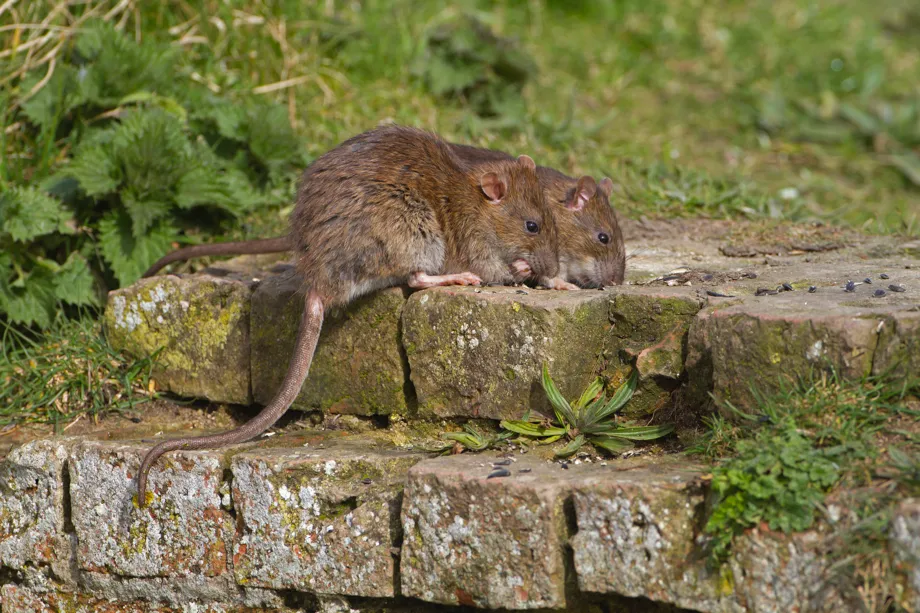Rats are on the move. While there have been restrictions on humans during lockdown, the same cannot be said for rats. There is increasing evidence that the COVID-19 pandemic has resulted in a radical shake-up of rodent society.
Within weeks of the first lockdown in March 2020, around 50 per cent of pest controllers across the UK were reporting increased signs of rat activity when out on a job, according to a survey conducted by the British Pest Control Association (BPCA). By October, the situation had got even worse, with almost 80 per cent of BPCA members observing an increase in rat activity.
Why would this be? “Rats benefit and thrive from the things that we do,” says Natalie Bungay, the BPCA’s technical and compliance officer. Rubbish sacks stacked on the pavement or half-eaten takeaways tossed into a bin are a handout for rats.
“They need about 200g of food a day and as long as they can find that they’ll be fine,” she adds. But with fewer humans on the streets, restaurants shuttered and less free food waste, many rats are having to graft harder to make ends meet.
This means straying beyond the confines of their covert, largely nocturnal existence, resulting in rats turning up in places and at times of the day when they would not normally be seen.
Read more about rodents:
- From dreaming to life-saving sniffs: 13 science-based rat facts
- African crested rat: The rabbit-sized rodent with poisonous fur
- Rats avoid actions that will hurt others – even if it earns them a treat
Brown and black rats are the two most common city-dwelling rat species in the world. Brown rats are much more common in temperate regions like the UK, as they are more resistant to cooler climates. Both rat species have a pretty small home range of around 30 metres in diameter. Even then, they will normally stick within an even tighter comfort zone, an area that can be just 10 per cent of their overall territory.
“Because we’re not there [in the cities], the rats haven’t got their food source and are having to extend their feeding range,” says Bungay. In addition, the cold weather of recent months is likely to have driven rats indoors.
“We always get more calls for rodent infestations in winter,” she says. With many offices either empty or operating with a skeleton staff, there is no shortage of spaces for rats to explore with relative safety.
All of this makes biological sense, but without systematic monitoring of these mammals, there’s very little data to indicate whether there has actually been any change in the rat population. We just don’t know, admits Bungay. “It’s all based on opinion and assumption,” she says.

“Wild rat research isn’t sexy,” says Dr Michael Parsons, an urban ecologist at Fordham University in New York. “It isn’t well-funded and even those of us who study rats full-time can make few educated guesses about how many there are.”
What he can show, however, is that when Manhattan went into lockdown in March 2020, the number of rat sightings logged on the city’s NYC 311 reporting system actually went down by some 30 per cent compared to a normal year.
“Most researchers I have spoken with believe there was an initial decrease in rat numbers because rats were stressed by the closing of restaurants,” says Parsons. This may have resulted in natural selection, with the bolder, more resourceful, risk-taking rats more likely to survive to pass on these characteristics to their offspring, he suggests.
“Once restaurants re-opened, rats had access to their old feeding grounds as well as the new areas that a few desperate, risk-taking rats may have found.” So even if there really was an initial decrease in the New York rat population, it’s likely it has bounced back and may even have increased, says Parsons.
Read more from Reality Check:
- COVID-19: Can we stop the spread of more coronavirus variants?
- Could a new appetite-controlling drug be the answer to obesity?
Does any of this matter? For most people, the idea that rats really might be squeezing their way up from the sewers and gnawing their way into our homes is likely to elicit a shudder, but losing a bit of food to a rodent is no biggie in the grand scheme of the pandemic. But the economic cost of rat damage in the US is estimated to be $19bn a year and this doesn’t even factor in the very real threat they pose to public health.
The list of diseases that can be carried by rats is long. A study in the 1990s took a close look at 600 wild brown rats captured on farms in southern England and found they were riddled with fleas and mites, and were reservoirs for a cocktail of disease-inducing viruses, bacteria, protozoans and worms.
There is no evidence that rats could be vectors of the SARS-CoV-2 virus, but as fragments of the virus’s genetic signature has been detected in wastewater and it is known to survive on a range of different surfaces for several days, this is at least a possibility.
If the COVID experience has taught us anything, it’s that we need to be careful about how close we get to wild animals. “Rats are so important that more effort should be spent on behavioural and disease surveillance,” says Parsons.
Visit the BBC's Reality Check website at bit.ly/reality_check_ or follow them on Twitter@BBCRealityCheck
